
Sail of the Century
A permanently installed sound reinforcement system for the Sydney Opera House’s flagship Concert Hall.
Text:/ Christopher Holder
‘Iconic’: it’s an adjective that’s now used to describe anything from hamburgers, desk lamps and old comedians to hand bags. Anything now has the potential to be iconic, and if you’re a marketeer then best bung the word into every second sentence… just to be safe.
The Sydney Opera House is truly iconic. By which I mean it transcends its raison d’etre: it’s far more than a performing arts centre, it’s a national symbol of a young energetic country, with global aspirations far beyond its remote location and meagre population. It’s inextricably bound up with the other ‘iconic’ images of kangaroos, Uluru and Lara ‘where the bloody hell’ Bingle in a bikini.
But with instant international recognition comes a commensurate and considerable international expectation; or in performing arts terms: if you walk the walk, you gotta talk the talk. And, for many years the Sydney Opera House’s Concert Hall wasn’t ‘talking the talk’. At this point, if anyone from the Sydney Symphony is reading this and arcing up, put the tympani mallets down and back away slowly… the criticism has rarely been in the programming or the performances: it’s been about the sound reinforcement.
TURNING UP
Sound reinforcement in the Concert Hall has always been fraught. For a proud and knowledgeable technical staff it’s long been a source of frustration. Sure, the Concert Hall’s prime purpose is to host acoustic orchestral performances, but whenever the amps were turned on, the ‘notices’ were often less than glowing. Something had to be done.
Cue: David Claringbold, Technical Director of the Sydney Opera House.
But before we hear from David, a little background: the SOH is a big bureaucracy, often as byzantine and intricate as the building’s distinctive architecture. Buying a new rig isn’t as easy as getting a budget and signing a purchase order, there’s a complex array of stakeholders and gatekeepers to deal with. Claringbold has seen the machinations of the SOH for too long to make the mistake of breezing into a board meeting and saying he wanted a new sound system ‘because it’ll sound better’.
David Claringbold: You need to make a business case. So the application was framed as seeking an improvement to the business capabilities of the SOH and resulting sound performances for visitors who expect the best.

Totally Covered: These two views show the various d&b speaker systems in place: the main nine-element J Series hang, the wide-dispersion Ti Series side arrays, and the four-element Qi Series delays at the back of the hall. You can also spot the cardioid J Subs stacked on stage and Qi10 in-fill. The main J Series array has three modes, or hang heights, depending on the use. These allow the SOH to accommodate a variety of sight line and rigging issues, e.g having a screen behind the orchestra or doing a TV show where the PA needs to be heard but not seen, as well as standard concert positions. The main PA can be vertically adjusted up to 20° in addition to the various height settings. These are ‘touch of a button’ programmable winch positions (with EQ and delay settings to match), much to the relief of the sound crew who, prior to the install, would be routinely up all hours in preparation for an amplified gig. NB: in these photos the main PA hang is set high in ’Speech Mode‘ for symphony purposes.
LARGE TENDERS
Knowing the hurdles that needed to be negotiated, Claringbold set about building a formidable team to give the enterprise its best chance of success.
David Claringbold: I’ve had some experience with large tenders and I knew having an objective voice to assist is very important. I contacted Bruce Jackson, who’s well known to the audio community in Australia and worldwide, and asked if he’d like to be involved.
Bruce spent a couple of sessions with our sound team, watching what was going on, talking to them and asking questions. He’s accustomed to going into arenas like Wembley Stadium with artists like Barbra Streisand and getting things precisely how he’d like them. Meanwhile, he was looking at us, thinking ‘why all the compromises when there doesn’t seem to be a reason for them?’.
Importantly, Bruce gave our sound team the confidence that he was on their side. Then he did something quite unique: a high-profile jazz artist was due to perform and we’d had quite a few bad reviews about jazz performances in the Concert Hall – it’s a tricky venue for the intricacies of jazz. I asked Bruce what he’d do. He moved some things around, but the main change was to hire $2000 worth of drapes, hang it above the stage and dampen the acoustic down.
By chance, much of the board and executive turned up to that show because they liked the artist and for them it was a revelation. From then on we had their undivided attention – they felt comfortable that the people we were dealing with, and the kinds of solutions possible, would match their aspirations.
SHOOTOUT
David Claringbold: Next we went through the formal process of auditioning the kinds of systems we might like. It was important from Bruce’s perspective that people got to show their wares, and it was illuminating: there are a lot of good sound systems out there. It gave our sound team a chance to engage with Bruce about how to subjectively evaluate a sound system. There were no EASE plots or measurement programs, just our ears, some Sennheiser MD421 mics and a CD player – nothing fancy.
Bruce Jackson: The thing is with a shootout, you always get someone ending up on top, that’s the purpose. But we made it as fair as possible; we had them all walk round, listen to what we heard and we gave them our comments. When we heard things we’d make a suggestion and we’d allow them to adjust and then we’d listen again.
MOMENTUM
That first shootout was staged in 2004 and based on mono centre cluster submissions – an approach, after considerable modelling and consideration, that was discarded. Then progress stopped… for some two years. It was no coincidence that momentum only returned when David Claringbold returned (from a stint in the ‘private‘ sector)… that and the arrival of a new CEO with a fresh perspective:
David Claringbold: The arrival of Richard Evans as Chief Executive at SOH accelerated the impetus for change. The essential desire was to encourage international artists from all musical genres to perform here.
“”
We now have the answer to all the challenges that have come past here in the last five years, and we can do it well
MONO TO STEREO
Meanwhile, Ralf Zuleeg (Head of d&b’s Application Support department) was beavering away on a stereo solution based around d&b J-Series loudspeakers that would accommodate those international aspirations. The design won the second-round system shootout in 2008.
From there, in the interests of certainty, a test system was installed. National Audio Systems, the Australian representatives of d&b, had sold J Series rigs to a number of Australian rental companies and it was now time to hire the gear back. System components came from IJS, with added support from Cairellie and LSV Productions in Sydney. The system comprised a left/right hang of J-Series, with J-Subs, E3 front fills, and Qs for first position side hang, and out above the upper stalls for delays.
Ralf Zuleeg, d&b: We ran the system for a show with Anoushka Shankar, daughter of Ravi, with three or four musicians: tablas, percussion, siitar. That’s just what you need, it’s no good running a system trial with CDs, because a CD is pre-EQ’d; they tend to have too much HF and low end, and they never really display the dynamics of a live show. Bruce Jackson expressed concern about the low mid from the side boxes. In that we were agreed: the dispersion from the Q was too tight for the available rigging positions, which put the boxes too close to the target audience. Fortunately, I knew we were about to launch the T-Series; with its wider 105° dispersion and more power. It was perfect, I just needed to persuade David and Bruce.
The resulting solution was agreed after Zuleeg returned with a practical demonstration system of the T-Series system.
MORE THAN A PA
Selecting the PA was one thing, getting it permanently installed was another matter entirely. Integrating the cabling, the infrastructure and machinery that would drive the system proved to be a serious test of skill and ingenuity. Theatre consultant Peter Holmes from Marshall Day was given oversight of the job, with Rutledge Engineering appointed as head contractor and system integrators. Rutledge assembled a team that included: Downer Engineering for electrical, and Harris Movement Engineering (HME) for the specialist mechanical engineering and cable management systems.
Rob McCormack, Operations Manager, Rutledge: All projects come with challenges, but working in the Sydney Opera House, and in particular the Concert Hall ceiling, presented challenges quite different to anywhere else we’ve worked. The roof space is so tight and awkward that in the end we, or rather the HME guys, man-handled all the equipment up the stairs by hand. The only exception was the two-tonne chain hoists, which came up in the basket through the ‘bomb bay’ doors. These are a pair of doors directly above centre stage; each approximately 1sqm – they lift out. The basket has a load limit of 450kg and only just fits through the doors with 10mm clearance each side. To raise loads you have to hang out over the void on a harness and push the load around and past some of the acoustic donuts as it comes up. Awkward at best, that’s why it was only used for the really heavy loads that couldn’t be physically carried upstairs.
HME has done some fine work, they had to remove some of the legacy gear from the previous sound systems, including a huge winch for a centre cluster which they had to cut up to get out. It was similar for the new gear; the amplifier racks, the cable management systems, the wire winches; all were carried upstairs in pieces and assembled in place.
Glenn Harris, Owner HME: The chain hoists for the main J-Series hangs are Lift Champ from GIS in Switzerland. Meanwhile, we purpose-designed Zero Fleet EDH250 250kg drum winches for all the other lighter PA points – the T-Series around the stage and the Q-Series delays out in the house – and they were all designed and built by HME. The Zero Fleet winch drum moves to wind the wire along it, rather than the wire being guided onto the helical drum. We found there simply wasn’t enough room for the wire movement required for the simpler winch type. Positional accuracy is obviously very important, so we run all the hoists and drum winches from a Kinesys Elevation 1+ system, 18 points of axis in total. It’s a very good system. While running as a discrete control system for the loudspeaker hoisting system, it is integrated into the wider E-Stop safety systems within the Concert Hall.



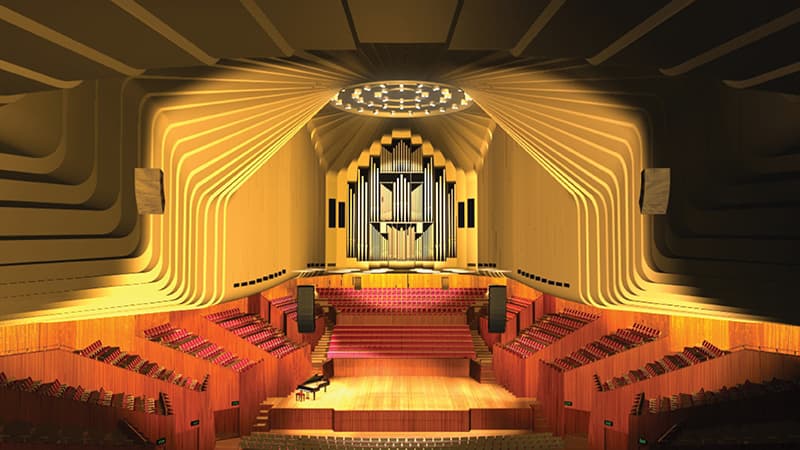
VISUALISING SUCCESS
An often neglected skill in specifying a system is the ability to ‘sell’ the upgrade to those signing the cheques. David Claringbold is a past master at knowing the importance of pitching a technical upgrade: “we’d only have one chance to present, one shot to describe what it would mean to them, and to get the funding approved.”
Claringbold knew Peter Holmes of Marshall Day would be invaluable in presenting the case. Peter began by setting down the objectives of the upgrade, which included:
- provide the best coverage
- to be permanently installed to reduce cost to the client
- to provide flexibility for the performance and announcements made there
- to provide improved coordination with the other theatrical systems
- meet the conservation plan
Peter Holmes, Marshall Day: Single-use concert halls, where there’s a solo acoustic environment, are financially difficult to maintain, especially in a country like Australia where there’s a large amount of product going through. We’re noticing that concert halls are dealing with a wide array of presentations with reinforced music playing a part.
The system had to integrate with projection and a vast array of musical instruments. In other words, this needed to be a single system that’d do the job. Not a single vocal system then a supplementary system for the reinforcement; one system that could sit permanently in the space that was acknowledged as being part of the heritage of the room.
To get the proposal past the board we built a visual model of the room itself [credit must go to Gary Jackson for these] and put the components of the room into the model [pictured]. We could demonstrate to the board all the components that were being looked at.
SYMMETRY IN EYE OF BEHOLDER
Rutledge Engineering’s NSW State Manager, Nick Orsatti, picks up the story:
Nick Orsatti, Rutledge: For me, the heroes of this project are the guys who were working in the ceiling. Working conditions were just plain awkward and uncomfortable – there is almost nowhere you can work upright, it’s a crouch at best. It’s also hot and humid in the ceiling void. This, coupled with working the graveyard shift for extended periods, made for a very challenging environment. The installation constraints were mind boggling. 3D modelling and the like were used to their full potential during detailed design, but at the end of the day, the hi-tech approach made way for a string line and plumb bobs for the most complex of locations. But lack of symmetry was a killer, you’d drop a line from the roof where surveying and design told you a point needed to be, and when you looked down from in the hall it just didn’t look right; some of the locations were as much as 100mm off.
KNUCKLE SANDWICH
This is a double bind: the wooden interior of the Concert Hall is entirely hung off a floor-standing metal framework, independent of the SOH’s outer concrete shell. It poses the question: do you hang what looks right, or what’s geometrically symmetrical? As you might expect, aesthetics wins. But how to make the fine adjustments? HME came up with an ingenious mechanical solution.
Glenn Harris, HME: Every connection needed three degrees of freedom worked out before the steel could be installed: vertical angle, horizontal angle, and twist. We designed a knuckle that allowed this to be set on site, as measuring this for each location was nigh on impossible.
AMP RACK DECISIONS
Where to put the amp racks was another vexed question given the constraints of the roof space.
Rob McCormack, Rutledge: The specification intent called for the amplifiers to be as close to the arrays as possible – on the flat catwalk close to the crown of the roof void. But issues of excessive heat and lack of serviceability drove us to find a better solution. We found a platform above the inner shell, in the void between inner steel frame and the outer concrete shell; not only was it much cooler, the access to amplifiers, once you’d navigated your way there, was excellent.
Unfortunately, it wasn’t quite that simple, we had to run power there. For practical future proofing we installed a 250A supply direct from the central control room (CCR). The CCR is over 100 vertical feet (30m) beneath the platform, and a very convoluted path to reach it was needed to navigate past every air conditioning duct, fire drencher pipe, and all the other existing services, let alone the structural framework of the building itself. On top of this, new power was provided for the system components at stage level [subs, fill etc] and at front of house to ensure clean power for the new system.
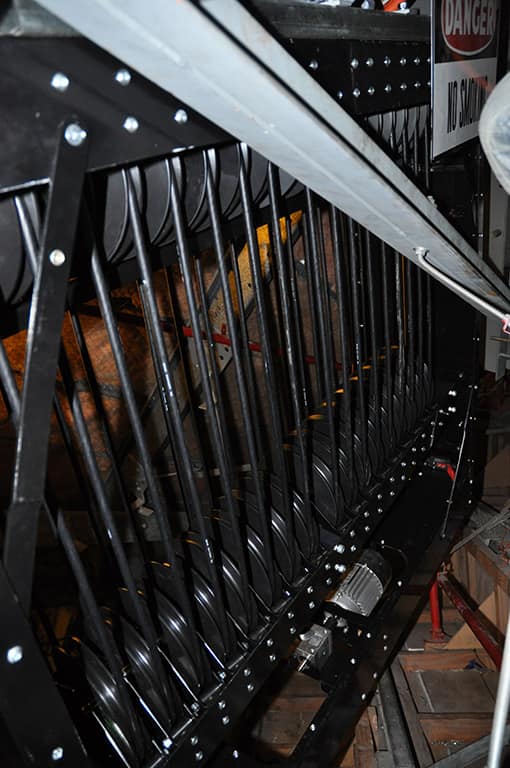

HME has used GIS hoists (left) managed by Kinesys controllers, making for an excellent variable speed C1 hoist arrangement. The cable manager (right) was required to give an unbroken cable path from amps to array – no slip rings allowed. In the case of the main hang this meant 75m of 22mm multicore. HME used a reverse Reeves pulley system. This unit is nearly 2sqm, weighs 450kg and requires 1.4 tonne of force to work.
WIRED FOR SOUND
Peter Holmes, Marshall Day: The processing system needed to handle the different system configurations, and the Dolby Lake Processors had the inside running there, as the SOH had previous experience with them. The DLPs neatly integrate with the Audinate Dante networking, which is a high-speed low-latency audio network that can share bandwidth with other networking systems. [See Issue 6 for more on Dante.]
So, from the console the sound would head to the DLPs in the ceiling via the Dante network. From there the amp racks are fed via AES. There’s an analogue fallback, so if the Ethernet network were to fail, a signal can be distributed around the main audio network to allow the system to operate.
Nick Orsatti, Rutledge: There’s no point providing redundancy if it can’t be accessed quickly, so we worked with the wider project team to prepare a risk assessment and fail-over strategy for the system’s signal distribution.
The outcomes of this design development included more comprehensive patching at critical locations, and the upgrade to an AES/EBU-capable redundant backup, complete with discrete wordclock distribution. A new cable path was found to create the shortest run possible between the console and the amps, meaning we could provide a 96k-capable backup solution.
DONE DEAL
With the system now installed, the SOH sound team can settle into a busy Summer season. Royce Sanderson sums up the situation nicely:
Royce Sanderson SOH Sound Department: The SOH is always asking us to do ambitious things; things we’ve had to struggle to do with the tools we had available. We now have the answer to all the challenges that have come through here in the last five years, and we can do it well. We get the most varied productions: ‘Jerry Springer’ [the opera], school speech days, the Foo Fighters; this system will easily alternate between those without major adjustments; I have no fear about headroom, and I know it will be a totally linear performance.
But, fittingly, it’s only right to give the final word to David Claringbold:
David Claringbold: The new system – complete with the draping solution, a great light show and the spectacular setting of the Sydney Opera House – now means the Concert Hall is, in my opinion, one of the best places on earth to see a live show. Artists love playing here, and now our audiences can share the thrill. That coupled with giving school speech days, community events and global superstars the same treatment, is to me what the Opera House is about – something for us all to enjoy.
This article was put together based on a combination of interviews commissioned by d&b, transcripts from the Integrate 09 ‘Sound in the House’ seminar and interviews conducted by AV. A brief synopsis of the ‘Sound in the House’ seminar is on the Integrate site in YouTube format. Go: www.integrate-expo.com and follow the Video link.

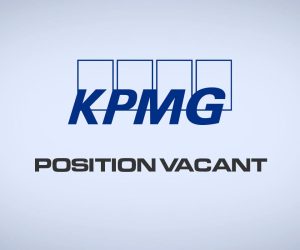

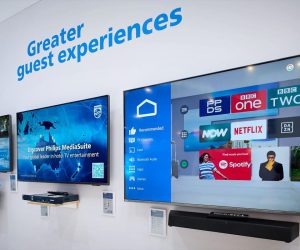




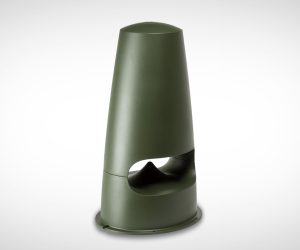
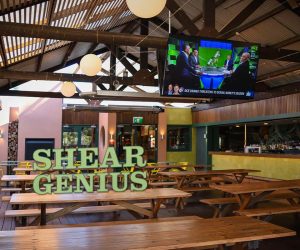





RESPONSES